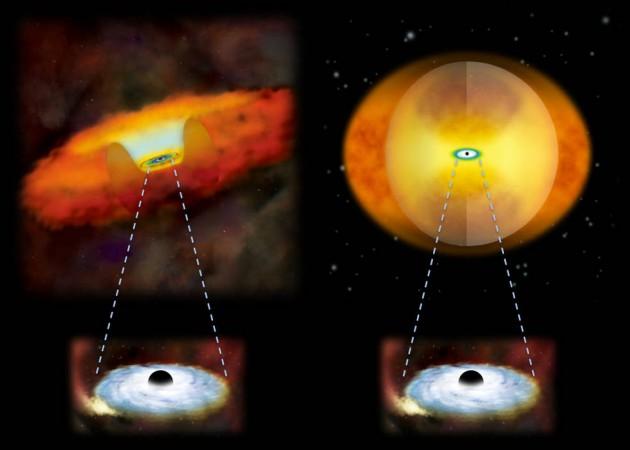
Black holes are known for swallowing everything that prevails in its environment. They are orbited by stars, debris and gas orbit for long time spans till the materials are pushed in because of major disturbances.
Also Read: UFO sightings have tripled since 2001, reveals the book 'UFO Sightings Desk Reference' [VIDEO]
A similar disruption has led to the joining of two galaxies, which resulted in drawing their black holes closer and the debris and gas prevailing in their surrounding areas get pushed in their respective black holes, blanketing them. A massive amount of high-energy radiation is emitted as the particles swirl swiftly towards the black hole which transforms into an active galactic nucleus (AGN).
An AGN refers to a dense region present at the center of the galaxy that possesses high luminosity at some parts or the entire electromagnetic spectrum, which got the traits pointing that stars don't excessively radiate.
A study carried out using NASA's NuSTAR telescope revealed that in the late stages of galaxy mergers, the amount of dust and gas entering the black hole is so high that the extremely bright AGN is enshrouded.
NuStar refers to a Small Explorer mission led by Caltech, which is managed by NASA's Jet Propulsion Laboratory (JPL) for NASA's Science Mission Directorate in Washington.
It was found that the speed of the freely orbiting materials was depleted because of the impact of the gravity of both the galaxies, resulting in making the particles fall onto the black hole.
"The further along the merger is, the more enshrouded the AGN will be," said Claudio Ricci, lead author of the study published in the Monthly Notices Royal Astronomical Society, as quoted by a NASA statement.
"Galaxies that are far along in the merging process are completely covered in a cocoon of gas and dust," Ricci added.
The surveillance of the galaxies made by NuSTAR was compared to the data about lower elements of X -ray spectrum accumulated by NASA's Chandra and ESA's XMM-Newton observatories. Spotting high-energy X-rays from a galaxy reveals that an AGN to be heavily obscured.
This research concludes that the AGN's black hole eats a lot in the later stages of a merger while it is enshrouded.
"A supermassive black hole grows rapidly during these mergers," Ricci said.
"The results further our understanding of the mysterious origins of the relationship between a black hole and its host galaxy," Ricci concluded.
The study was published in the Monthly Notices of the Royal Astronomical Society.

















